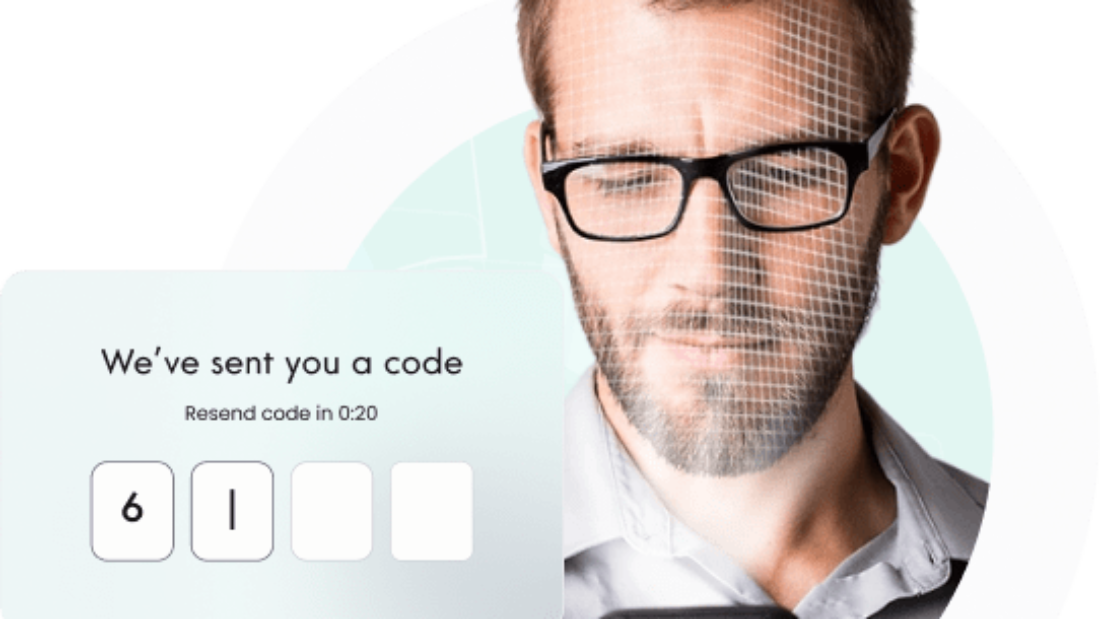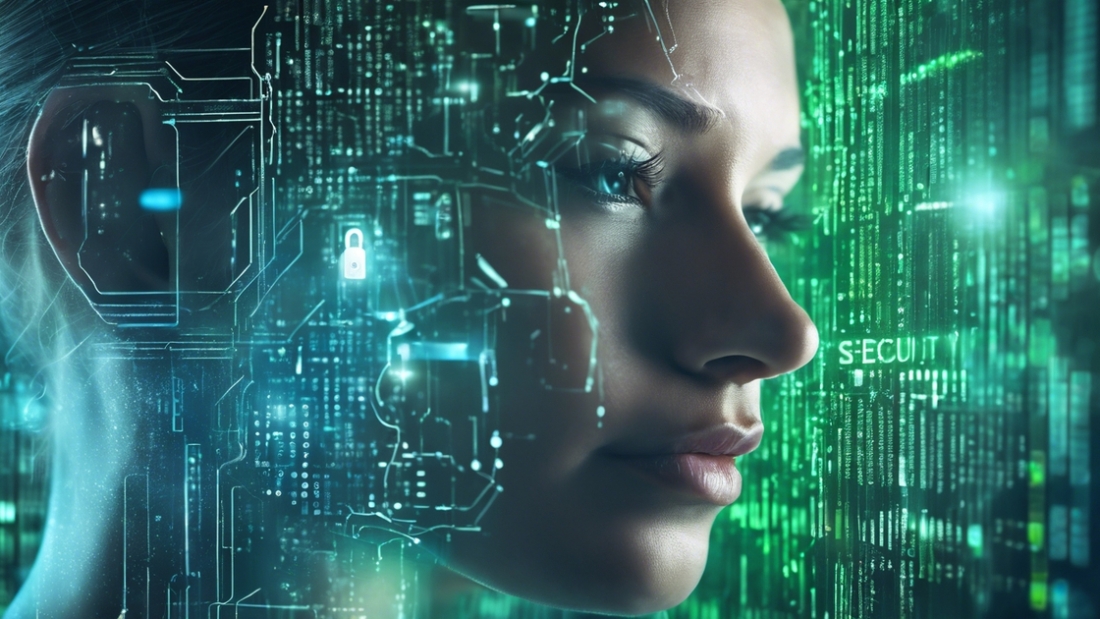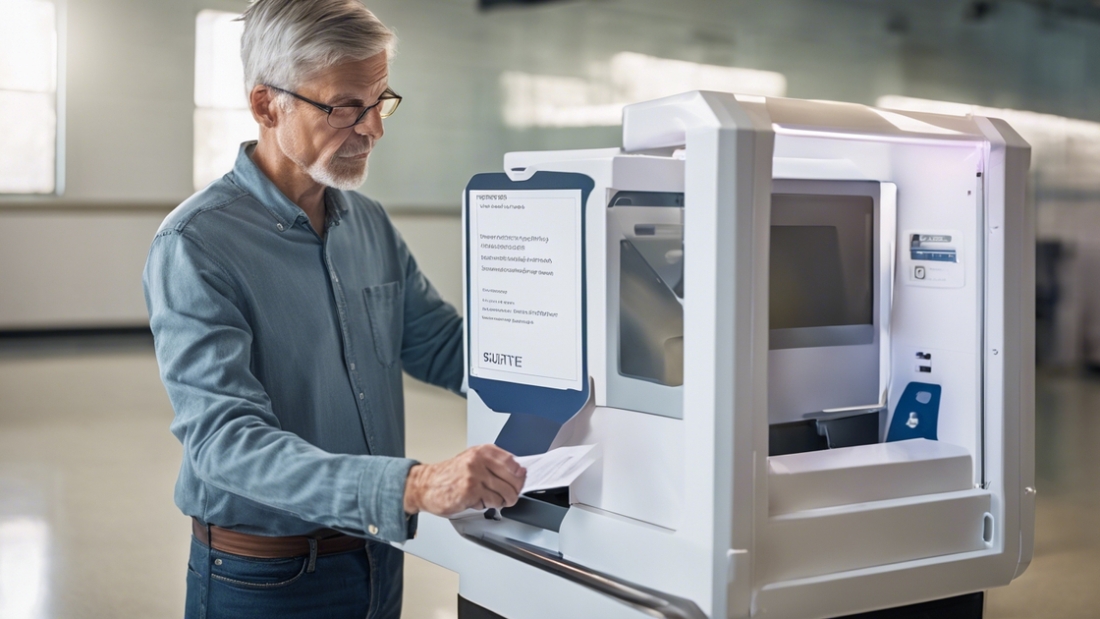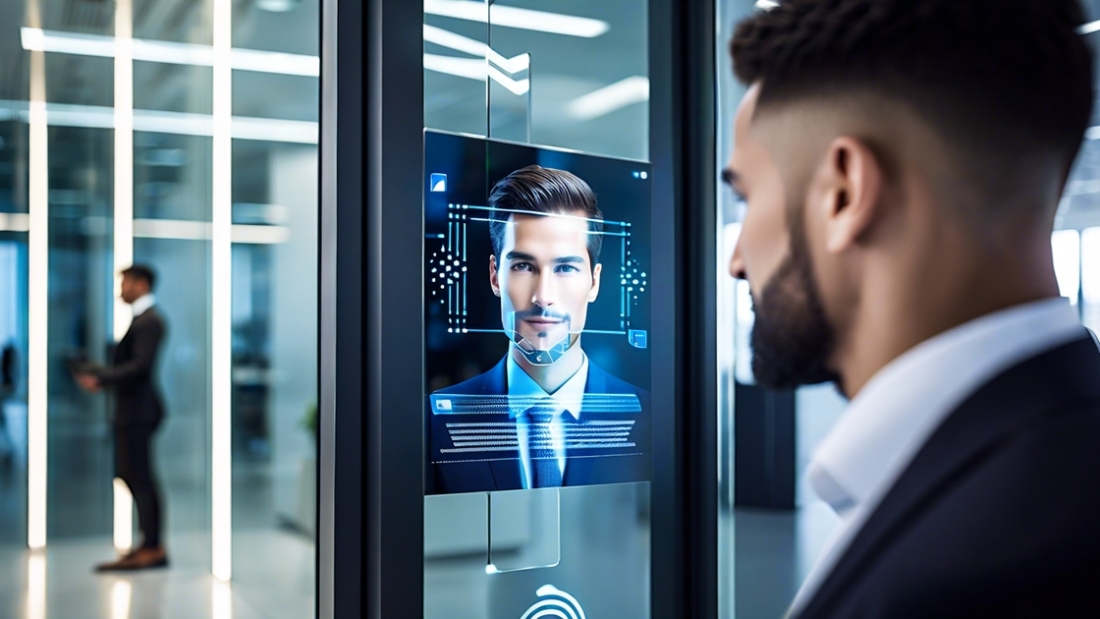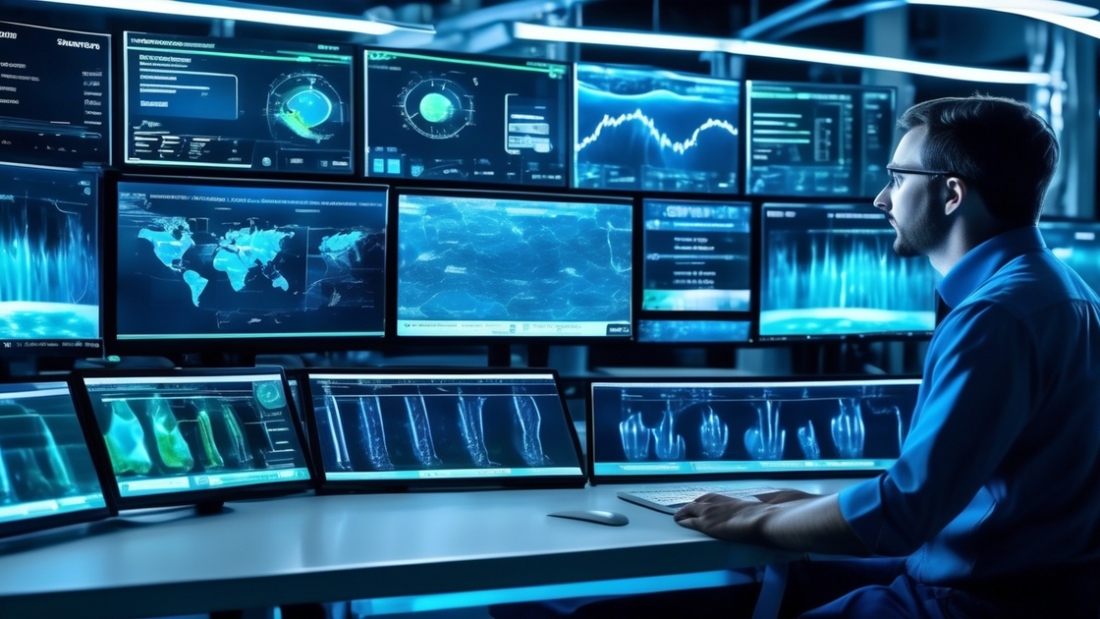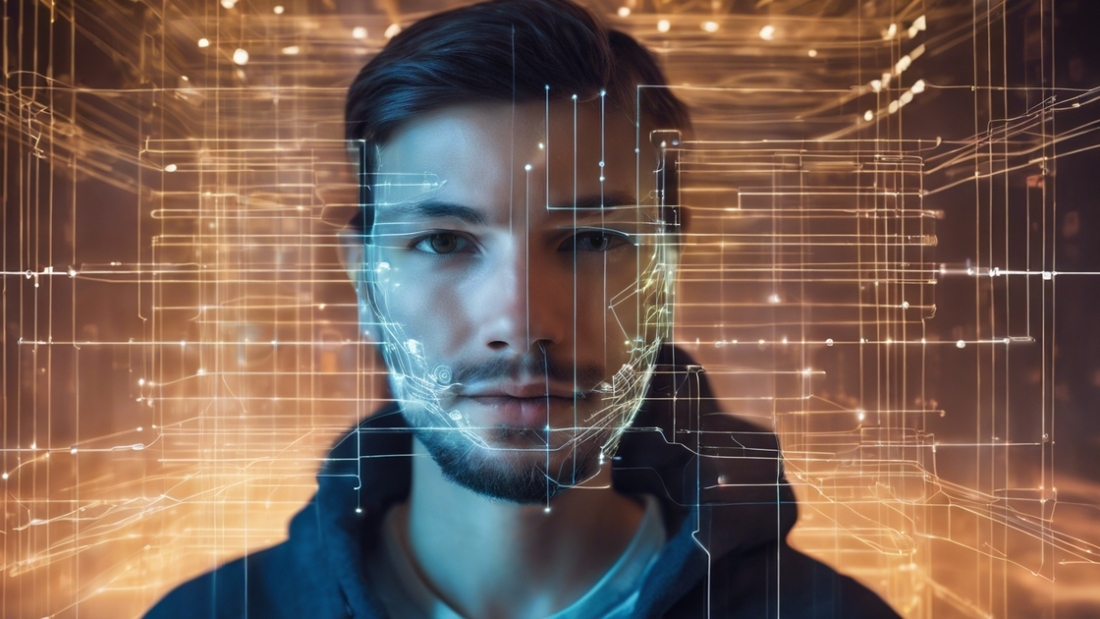Over 90% of digital security breaches could have been prevented with better authentication methods, highlighting the critical role of face liveness detection, powered by computer vision and deep learning to distinguish between real faces and fake faces, in today’s tech-driven world. As cyber threats evolve, the technology behind face liveness detection has become a cornerstone in safeguarding personal and corporate data against sophisticated fraud attempts. From unlocking your smartphone with a glance to accessing high-security buildings, this technology ensures that only real, live humans can gain entry. Dive into the world of face liveness detection to understand how it blends advanced algorithms with practical applications, offering a robust shield in our increasingly digital lives.
Evolution of Security in Digital Wallets
Password Shift
Digital wallets have transitioned from traditional password-based security to more advanced biometric solutions, incorporating face detection, deep learning, computer vision, and data augmentation. This shift is primarily due to the vulnerabilities passwords pose, such as being easy to hack or forget.
Biometric authentication, including face liveness detection powered by computer vision and deep learning techniques with data augmentation on a diverse dataset, offers a more secure and user-friendly alternative. It uses unique physical characteristics, making unauthorized access incredibly difficult.
Biometric Solutions
Face liveness detection, leveraging computer vision and deep learning, stands out among biometric technologies for its ability to combat fraud by analyzing dataset lines. It ensures the person trying to access the digital wallet is physically present and not a photo or video spoof.
This technology uses sophisticated algorithms to analyze hundreds of facial features in real-time. It can detect subtle movements and signs of life that imposters cannot replicate, using deep learning algorithms trained on a dataset of lines.
Combating Fraud
Spoofing attacks, where fraudsters attempt to fool security systems with fake identities, are a significant threat to digital wallet security. Face liveness detection plays a crucial role in preventing these attacks.
By requiring live verification, it becomes nearly impossible for attackers to use stolen photos or videos from a dataset to gain access along those lines. This drastically reduces the success rate of digital wallet frauds.
Advancement Impact
Advancements in face liveness technology, bolstered by an extensive dataset, have greatly contributed to safer online transactions along various lines. Improved accuracy and speed in detecting spoofs mean users can trust their digital wallets for everyday transactions.
Moreover, these advancements have increased user confidence in digital wallet platforms. Knowing that their financial assets are protected by cutting-edge technology encourages more people to adopt digital wallets.
Understanding Digital Wallet Risks
Security Threats
Digital wallets have transformed the way transactions are conducted across the globe, offering convenience at our fingertips. However, this digital evolution has not been without its challenges, particularly in terms of security. Phishing attacks, for instance, trick users into revealing sensitive information, while hacking can directly compromise wallet security. Spoofing, another prevalent threat, involves impersonating a user to gain unauthorized access.
Phishing often uses seemingly legitimate emails or messages to lure individuals into providing their personal data. Hackers, on the other hand, exploit vulnerabilities within digital wallet applications or the devices they are housed on. Spoofing might involve fake biometric data or manipulated devices tricking systems into granting access.
Liveness Detection
To combat these threats, liveness detection has emerged as a critical tool. It ensures that the entity attempting access is a real person present at the time of the transaction and not a photograph, video, mask, or any other form of spoof.
Liveness detection technology employs algorithms that analyze hundreds of facial features, lines, and movements. This process helps distinguish between a live person and a non-live entity. By requiring physical presence for transactions, digital wallets significantly reduce the risk of unauthorized access.
Financial Impact
The consequences of compromised digital wallet security extend far beyond unauthorized transactions. Victims may face significant financial loss as funds are stolen or misused. Moreover, reputational damage can occur, both for individuals and businesses, eroding trust in digital payment systems.
Recovering from such incidents requires time and resources, with efforts needed to restore security and regain customer confidence. The impact on one’s credit score and financial standing can also be long-lasting.
How Liveness Detection Works
Selfie Videos
Analyzing selfie videos forms the core of liveness detection. This method is crucial in distinguishing real users from fraudulent attempts. By requiring a user to capture a short video of themselves, face liveness technology scrutinizes the footage for natural human movement and response. It checks for blink patterns, head movements, lines, and other subtle facial expressions that are difficult for spoofers to replicate accurately.
This process leverages advanced algorithms and machine learning models, specifically trained to identify these minute but significant differences. The sophistication of such systems means that attempting to deceive them with photos, videos, or masks becomes exceedingly challenging.
Automatic Scaling
One of the top advantages of using Amazon Rekognition Face Liveness is its ability to scale automatically in response to demand. This scalability ensures that whether a service is safeguarding a handful of accounts or millions, every user benefits from robust protection.
The system dynamically adjusts its resources to maintain performance levels, regardless of the number of verification requests. This feature is particularly important during peak times or sudden surges in user activity, guaranteeing consistent reliability and security.
User Effort
Minimal user effort is required throughout the verification process, making it both user-friendly and efficient. Participants simply need to follow simple instructions to capture and submit their selfie video. The ease of this procedure encourages user compliance and reduces friction during sign-up or authentication processes.
Moreover, the delivery of results is fast and efficient. Users do not have to wait long to gain access or receive confirmation of their identity, streamlining the overall experience. This speed does not compromise accuracy; the system meticulously analyzes each submission to ensure only genuine users proceed.
Securing User Authentication
Biometric Integration
Biometric authentication has become a cornerstone in securing user accounts and sensitive transactions. By incorporating face liveness detection, platforms can ensure that the entity attempting access is a live person rather than a photograph, video, or any other form of spoof attack. This layer of security is crucial for actions like logging into an account or authorizing payments, where the authenticity of the user is paramount.
Developers can integrate face liveness detection into existing authentication mechanisms with minimal hassle. The process often involves adding specific source code to the platform’s authentication process. This code works by analyzing unique biometric features, ensuring that the presented face is real and currently present.
Spoof Attack Prevention
Spoof attacks represent a significant threat to digital security, where attackers use fake identities to bypass authentication measures. Face liveness detection directly counters this by requiring the presence of a live, moving human face during authentication attempts. It significantly reduces the risk of fraudulent account creation and unauthorized access, thus safeguarding both users and service providers from potential financial and data losses.
The technology behind liveness detection has evolved to identify subtle facial movements and expressions, making it extremely difficult for attackers to mimic or fool. This advancement enhances the overall security framework of digital platforms, making them more robust against sophisticated spoofing techniques.
Seamless Integration
One of the greatest advantages of face liveness detection is its ease of integration into existing authentication systems. Developers do not need specialized knowledge to implement this feature. Instead, they can use the following code snippets and commands provided by liveness detection services to build and incorporate the functionality swiftly.
This seamless integration ensures that businesses can enhance their security measures without overhauling their current systems or causing significant downtime. It also means that users can enjoy heightened security without complicated procedures—maintaining a balance between user experience and safety.
Enhancing Transaction Verification
Security Layers
Face liveness detection introduces an additional security layer to the digital transaction verification process. By distinguishing between a real person and a photo, video, or any other form of spoofing, it significantly reduces the risk of unauthorized access. This technology uses a combination of artificial intelligence (AI), data augmentation, Face Liveness Detection Docker Image Source, and active checks to ensure the presence of a live person in front of the camera.
Businesses can now safeguard high-value transactions more effectively. For instance, during money transfers or when changing device settings, face liveness detection steps in as a critical validation tool. It scrutinizes the user’s live facial features, using Face Liveness Detection Docker Image Source, and compares them with the stored profile to confirm identity.
Accuracy Enhancement
The core strength of face liveness detection lies in its accuracy. Through continuous updates and improvements in AI algorithms, the system learns to identify subtle movements and unique facial traits that are difficult for spoofers to replicate. This includes analyzing the texture, depth, and response to various prompts in real-time.
Moreover, developers often integrate data augmentation techniques to enrich the training sets, allowing the AI to recognize a broader spectrum of spoofing attempts. Such advancements enhance the system’s ability to distinguish between genuine users and fraudulent attempts accurately.
Configurable Security
One notable feature of face liveness detection systems is their configurable confidence score. This allows organizations to adjust the level of security based on the perceived risk of a particular transaction. For low-risk operations, a lower confidence threshold might be sufficient, ensuring a smooth user experience without compromising security.
For high-value or sensitive transactions, the threshold can be increased, requiring more stringent proof of liveness. This flexibility ensures that businesses can maintain optimal security levels while minimizing potential friction for legitimate users.
Streamlining Account Recovery
Identity Verification
Face liveness detection simplifies account recovery by ensuring the person requesting access is the legitimate user. This method uses advanced algorithms to analyze facial features and movements, distinguishing real users from imposters or digital representations. It’s a quick process, often requiring just a few seconds for the user to complete an action in front of their camera.
Users benefit from this technology because it eliminates the need for lengthy security questions or waiting periods for manual account recovery. The system provides immediate feedback, guiding users through the verification steps efficiently. This not only speeds up the recovery process but also enhances security by making it harder for unauthorized users to gain access.
Fraud Prevention
One of the key benefits of face liveness detection is its role in preventing account takeover attempts. By accurately identifying live users as opposed to photos, videos, or masks, this technology ensures that only the rightful owner can recover and access their account. It acts as a deterrent for fraudsters attempting to exploit the account recovery process, thereby safeguarding users’ personal and financial information.
This method is particularly effective following transaction verification processes. If suspicious activity is detected, face liveness detection can immediately verify the user’s identity, confirming whether the transaction was legitimate or fraudulent. This seamless integration between transaction verification and account recovery strengthens overall account security.
User Experience
The technology behind face liveness detection is designed with user-friendliness in mind. It provides clear guidance and feedback throughout the verification process, making it accessible for all users regardless of their technical expertise. Read our product documentation for more details. This ease of use encourages compliance with security procedures, ensuring that users are more likely to successfully recover their accounts without frustration.
Moreover, by incorporating real-time instructions and corrections, such as adjusting the camera angle or lighting, users can complete the verification process on their first attempt. This not only streamlines account recovery but also enhances user satisfaction by minimizing disruptions to their online activities.
Advantages of Multi-Factor Authentication
Enhanced Security
Incorporating face liveness detection into multi-factor authentication (MFA) strategies marks a significant leap in securing digital identities. This technology ensures that the person trying to gain access is present and real, not a photograph, video, or a mask. It adds a layer of security that is difficult for attackers to bypass.
Face liveness detection works by analyzing unique patterns and movements that indicate a live person is in front of the camera. This method significantly reduces the risk of unauthorized access, making it a formidable opponent against identity theft and fraud.
User Convenience
One of the most notable benefits of face liveness detection within MFA is the balance it strikes between user convenience and security. Users appreciate quick and easy liveness checks that do not compromise their safety.
This technology allows for seamless verification processes that require minimal effort from the user. Unlike traditional methods which may involve remembering complex passwords or carrying physical tokens, face liveness detection offers a straightforward, efficient way to prove identity.
Accessibility Compliance
Ensuring accessibility for all users is crucial, and face liveness detection technology aligns with this by adhering to Web Content Accessibility Guidelines (WCAG). This compliance makes it easier for people with disabilities to use MFA without facing barriers.
The technology’s design considers various needs, allowing for adjustments in brightness, contrast, and other factors to accommodate different visual impairments. By doing so, it promotes an inclusive digital environment where security measures do not exclude anyone from participation.
Balance Between Security and Ease of Use
The integration of face liveness detection into MFA solutions perfectly illustrates how advanced technologies can offer both robust security and ease of use. Users no longer have to choose between strong protection and convenience. They can enjoy high levels of security without undergoing cumbersome authentication processes.
This balance encourages wider adoption of MFA, as users feel confident in the protection it provides while appreciating the simplicity of its operation.
Addressing Challenges and Considerations
User Privacy
Maintaining user privacy and data security is crucial in face liveness detection. Developers ensure that the data collected during the process, such as images or videos of faces, are protected and used ethically. They implement encryption and secure storage solutions to safeguard this information from unauthorized access.
Moreover, they design systems to perform analysis in real-time, without storing biometric data longer than necessary. This approach minimizes risks related to data breaches and ensures compliance with privacy regulations.
Technical Hurdles
Face liveness detection faces several technical challenges. Varying lighting conditions can significantly affect the system’s ability to accurately identify real faces. To address this, advanced algorithms that adjust to different light settings are developed.
Hardware limitations also pose a challenge. Not all devices have cameras capable of capturing high-quality images required for precise face recognition. Developers work on optimizing algorithms to be more forgiving of lower-quality inputs without compromising security.
Ongoing Developments
Continuous improvements in deep learning and computer vision technologies drive advancements in face liveness detection. Researchers are creating more sophisticated models that can distinguish between real faces and fake ones with greater accuracy. These models learn from vast datasets containing examples of both genuine interactions and presentation attacks.
Developers are also exploring innovative methods to enhance user experience while maintaining robust fraud prevention capabilities. For instance, they’re integrating adaptive response mechanisms that can request additional verification steps if suspicious activity is detected.
Summary
Face liveness detection is reshaping security across digital platforms, especially in safeguarding digital wallets. By understanding the risks and embracing the technology behind liveness detection, you’re stepping into a more secure digital environment. From evolving security measures to enhancing transaction verification, each step ensures your digital assets are protected against sophisticated threats. The integration of multi-factor authentication, including liveness detection, significantly reduces the chances of unauthorized access, making your digital transactions safer and more reliable.
Your journey towards a secure digital wallet doesn’t end here. It’s crucial to stay informed and adapt to emerging technologies that further bolster security measures. Embrace these advancements with an open mind and apply them to protect your digital life. Now’s the time to take action. Strengthen your digital wallet’s security by exploring face liveness detection solutions today. Secure your assets, secure your peace of mind.
Frequently Asked Questions
What is face liveness detection?
Face liveness detection is a security feature used to ensure that the entity attempting access through a digital wallet or system is a live person rather than a photograph, video, mask, or any other spoofing artifact. It’s crucial for preventing unauthorized access and enhancing user authentication.
How does face liveness detection enhance digital wallet security?
By verifying that the user is physically present, face liveness detection adds an extra layer of security to digital wallets. This prevents fraudsters from gaining access using photos or videos, thereby securing transactions and sensitive information.
Can face liveness detection work with multi-factor authentication?
Yes, face liveness detection works seamlessly with multi-factor authentication (MFA) by serving as one of the verification factors. It complements other methods like passwords or PINs, significantly enhancing account security and integrity.
What are the main benefits of using face liveness detection?
The main benefits include enhanced security against spoofing attacks, improved user authentication processes, and a safer environment for online transactions and digital wallet use. It ensures that only authorized users gain access, protecting personal and financial data.
How does face liveness detection streamline account recovery?
Face liveness detection streamlines account recovery by quickly verifying the user’s identity through biometric checks. This reduces the need for lengthy security questions or manual verification processes, making account recovery faster and more secure.
What challenges are associated with implementing face liveness detection?
Challenges include ensuring accuracy in diverse lighting conditions, dealing with different facial changes (e.g., aging, makeup), and protecting users’ privacy. However, ongoing advancements in technology are continuously addressing these issues to improve reliability and user trust.
Are there any considerations when choosing a face liveness detection solution?
When choosing a solution, consider its accuracy, ease of integration into existing systems, user privacy protection measures, and compliance with relevant regulations. Read our product documentation. Selecting a solution that balances security needs with user convenience is key to effective implementation.
